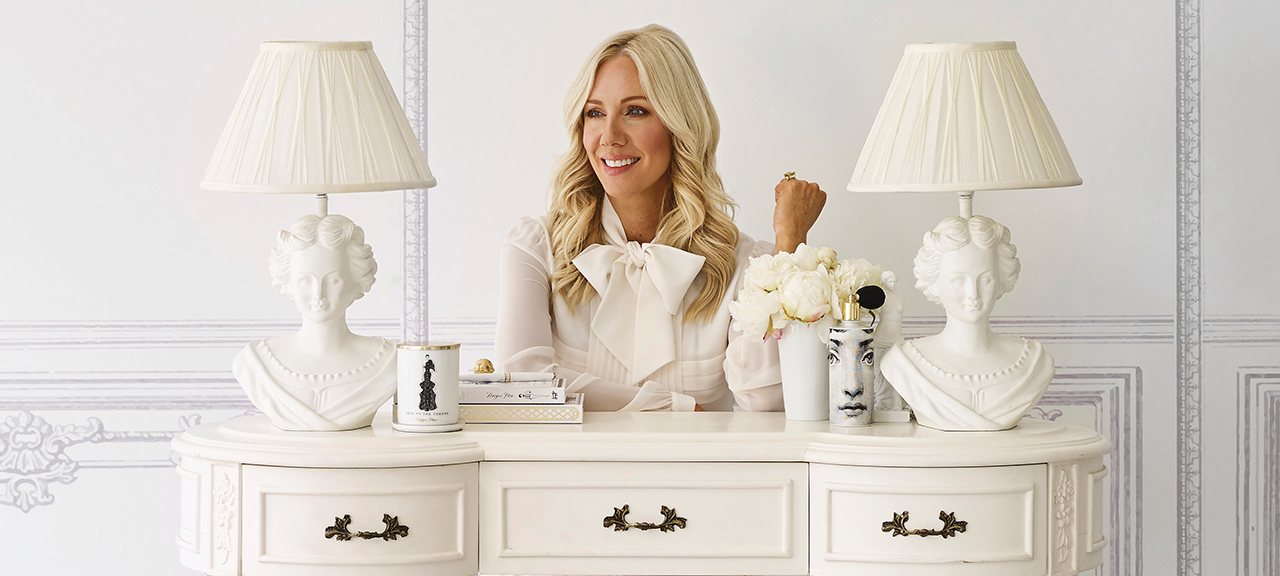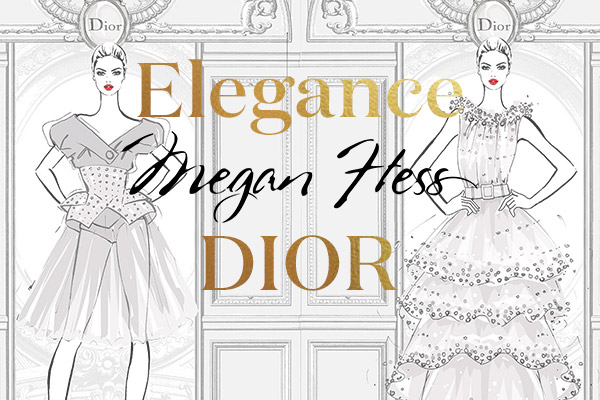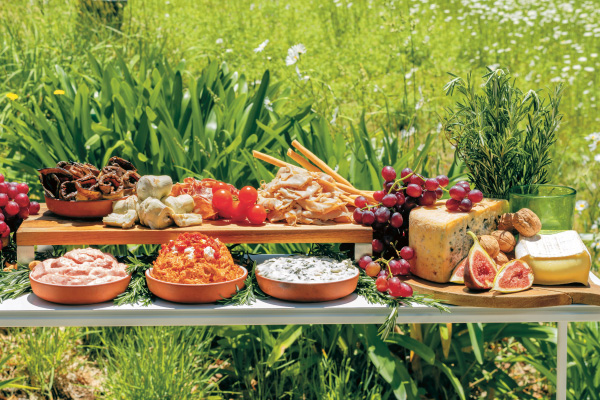French Fashion
29 Nov 2019 | Megan Hess
Megan Hess’s love for French style sparked her internationally successful career in fashion illustration. In her newest book, Elegance: The Beauty of French Fashion, she revisits the origins of her love for fashion and unspools the threads of ten legendary French designers. Megan reflects on the influence French fashion has had in her life, and the reasons it has remained effortlessly chic and stylish over the years.
French fashion is all in the details. It is delicate, understated and demure – you only need look at a classic Chanel suit and its woven wool tweed made in France or, if you can get close to one, run your fingers over the soft leather of an Hermès Birkin bag. The masters of French fashion do not rely on excess, instead approaching design with simple elegance.
In my career as a fashion illustrator I have always been drawn to French haute couture, but I was sketching the famed looks of Chanel, Dior and Saint Laurent long before it became my livelihood. I first experienced French fashion as a little girl, when I was mesmerised by Audrey Hepburn’s effervescent Holly Golightly. It was while repeatedly watching Breakfast at Tiffany’s that I became familiar with Golightly’s simple yet glamorous wardrobe. The way she wore her little black dress and string of pearls instantly struck a chord with me, and I remember drawing my own version of her outfits in my little sketchbook.
Until this point in my young life I had never thought to find out who designed the clothes I thought so beautiful. But now I needed to know who was responsible for such fashion mastery, and I came across a French designer named Hubert de Givenchy. It was at this moment that my love of French fashion was born.
The ten designers featured in my new book, Elegance: The Beauty of French Fashion, have had an enormous impact on me as a woman and on the way I see the wonderful world of fashion. I have selected my favourite looks from recent collections and a special few from decades past, hoping to highlight the stories of these designers that are so loved today.
One of the reasons I love French fashion is because it’s slow and focused. Sometimes in this busy world we need to be reminded that beauty cannot be rushed. The original style of many French designers has remained intact since their beginnings.
Hermès, the oldest designer featured in this book, started selling leather horseriding accessories some 180 years ago, and the house is now home to the most recognised handbag in the world – the Birkin – keeping the link to leather at the forefront of everything they do. The cinched waists and full circle skirts of Dior’s New Look, which debuted in the 1940s, are still referenced in collections today; the same is true for Chloé’s enigmatic, whimsical style, first seen over breakfast and croissants at Paris’s famous Café de Flore in 1956.
But French fashion also has the ability to adapt with the times, with a new wave of designers who have reinvented these heritage labels. Karl Lagerfeld led Chanel creatively from 1983 until his death in 2019, while Marc Jacobs was the first designer to introduce wearable fashion into Louis Vuitton’s long leather history in 1997, and Phoebe Philo was responsible for dressing the modern French woman during her decade at the helm of Celine.
“One of the reasons I love French fashion is because it’s slow and focused. Sometimes in this busy world we need to be reminded that beauty cannot be rushed.”
Intermingling the new with the old has kept French fashion perpetually in demand, and from that mix we have seen classic designs perfected over decades. I love how nearly all French fashion houses have their signature piece that so uniquely represents them. For Saint Laurent, it’s the famous tuxedo suit jacket; for Hermès, the silk scarf; and for Louis Vuitton, the iconic monogrammed travel trunk.
French fashion has also led a revolution in the way we dress and interact with fashion every day. It gave us prêt-à-porter clothing: Chloé founder Gaby Aghion believed fashion should be accessible to all and made her clothing ready-to-wear, removing the exclusivity of haute couture. French fashion taught us that style does not have to come at the expense of comfort: Coco Chanel was the first to move away from the corseted and restrictive styles of her era, instead designing liberated, looser fitting garments made from jersey and tweed.
Meanwhile, Hubert de Givenchy offered women choice with his 1952 debut range of separates: in a time when a woman’s wardrobe largely comprised dresses, this allowed women to pick and choose what they wanted to wear based on comfort, style and personal taste.
French fashion is wearable art, and the city that inspires it is the canvas. Over the years I have been fortunate to visit Paris many times for my work. I love everything about the fashion capital. It is one of those rare cities that you can enjoy to its fullest no matter what you are doing. Paris makes the ordinary extraordinary: from a freshly baked baguette wrapped in beautiful paper to a corner store that will box your single macaron with a silk ribbon, even the simplest tasks are completed with grace.
During Paris Fashion Week, I often think of the overwhelming contributions to style that French designers have made. It’s not so much the women on the runways, but the women in the audience that remind me of the importance of French fashion. Whether attending a show, on their busy morning commute, or inspecting seasonal vegetables at the market, Parisian women are always dressed impeccably. For those who have grown up surrounded by French fashion, style is effortless.
Fashion should be a joy, not a chore. French designers show us that innate style comes from within: you must dress yourself for yourself. It’s a simple philosophy, but that’s what makes it so perfect.
All text extracted from Elegance by Megan Hess
Available now in bookstores and online
Click here to find your preferred online retailer



